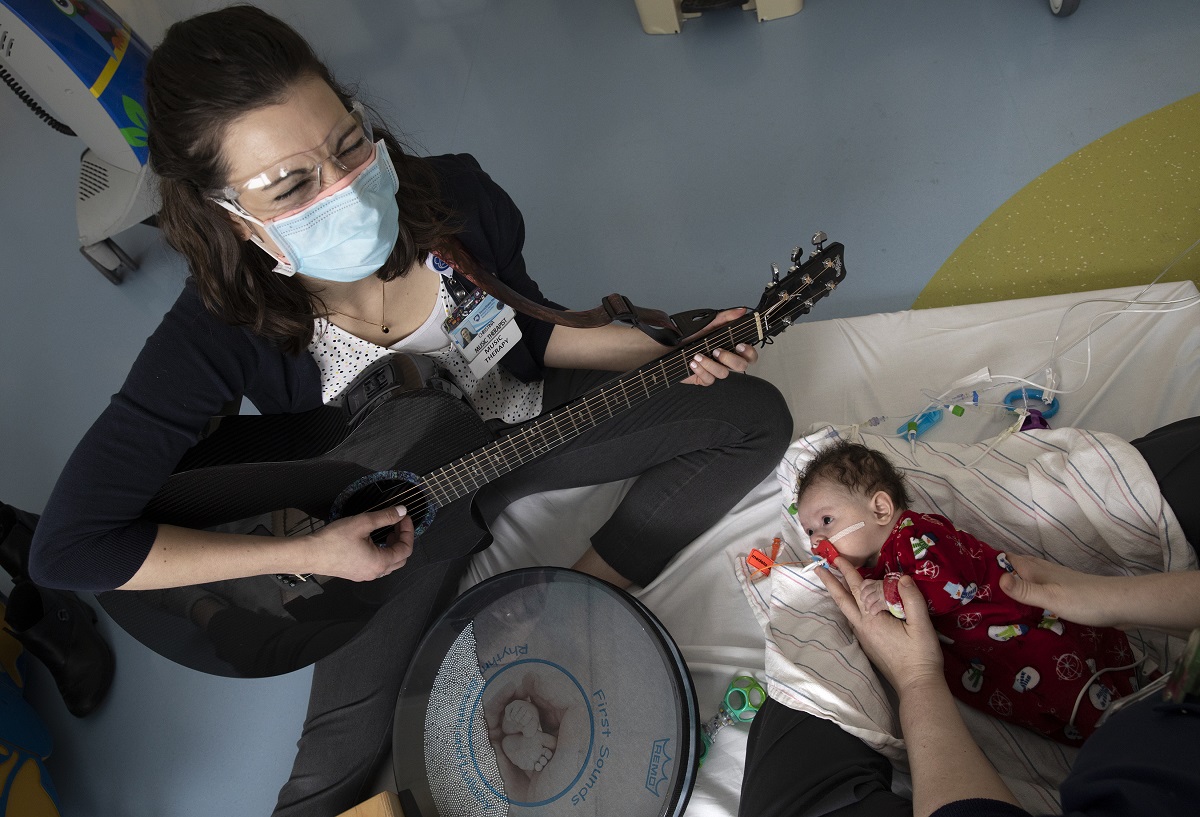Music to their ears: Relaxation videos bring therapy home

For Levi Thomson, the road to relaxation is just a link away – on the Penn State Health YouTube channel.
There, the 20-year-old Penn State Health Children’s Hospital patient selects a music relaxation recording from a variety of offerings done by the Music Therapy Program at Penn State Health Milton S. Hershey Medical Center.
“If you focus on the music, the rest of the sounds of the world float away,” said Thomson, who uses the recordings at home in Dover, York County, as well. “The music itself is well done. It’s soft, predictable, and it helps you feel comfortable and relax.”
Because the recordings are available both on the Penn State Health YouTube channel as well as the Get Well Network at the Children’s Hospital, patients and their families can access them at home to help decrease anxiety and have restful sleep.
“Access is the key thing we wanted to foster, both here and at home,” said Tina Myers, board certified music therapist. “We give cues on top of the music for focused breathing as a tool to use with music for pain management, coping or self-regulating. These things could be used in the middle of the night if the patient needs assistance.”
The original recordings, which include a description of how to best use them, are appropriate for a wide patient population from infants to geriatric patients, she said. When she recorded them, Myers used different combinations of sedative guitar layered with ocean drum and heartbeat drum.
“We manipulate the music to make it the most conducive to relaxation by using a certain tempo, a certain finger-picking pattern on the guitar and a certain number of beats per minute,” she said.
A Penn State Health Music Therapy Resources pamphlet that goes home with patients includes another option – a Music Therapy playlist on Spotify selected by the music therapists.
While music therapy is best done live so therapists can evaluate the patients’ emotional and physical responses, music can always help foster a therapeutic connection to positive feelings and memories.
“We use the gate control theory of pain management. Your brain can only process so many signals at one time, and if you can get the person engaged with the music—playing, singing or actively listening—it helps close the gate on incoming pain stimuli,” said Jan Stouffer, board certified music therapist on the Music Therapy Program team.
The recordings are a particularly creative vehicle for music therapy during COVID-19, when visits to patient rooms are restricted, and a silver lining has come from their use by the entire Therapy Services Department.
“Our occupational therapists, speech therapists and physical therapists have access to the recordings and use them to help patients relax and cope while doing bedside treatments,” Myers said. “We’ve gotten great feedback from staff.”
The music therapists have also received positive feedback from staff who have shared the recordings at home with their own families and even with colleagues at their spouses’ places of employment.
“That’s the beauty of music therapy,” Myers said.
If you're having trouble accessing this content, or would like it in another format, please email Penn State Health Marketing & Communications.
